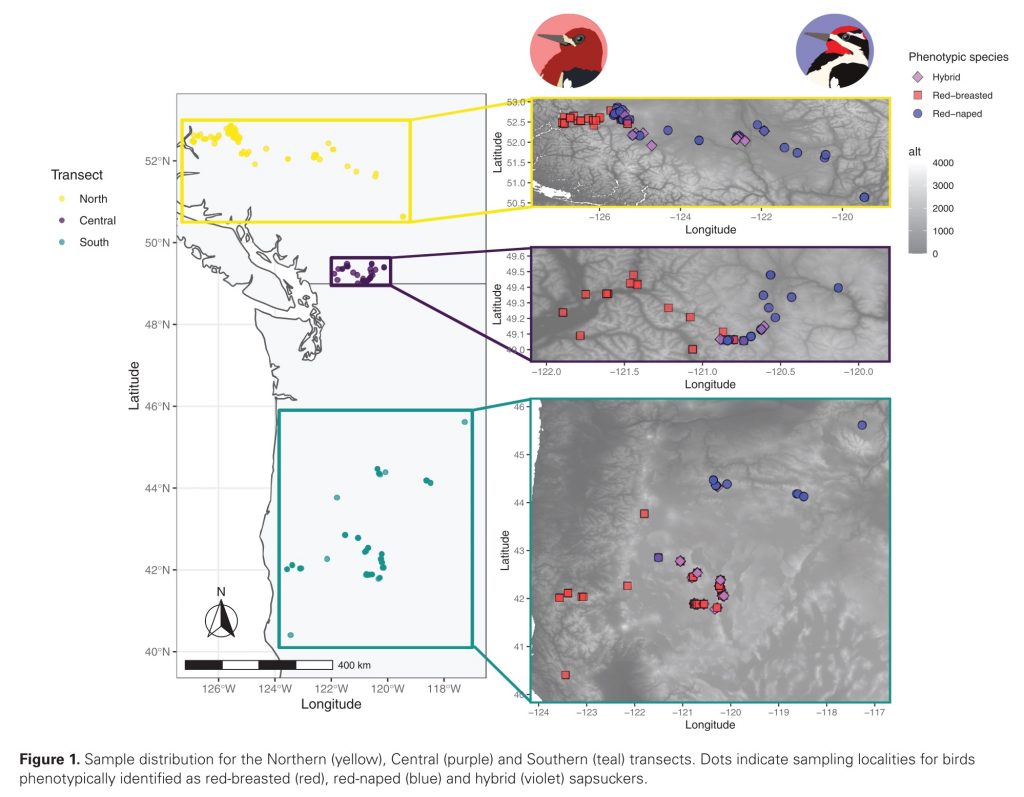Congrats to Libby Natola on the publication of her paper comparing hybridization dynamics among three well-separated transects across the Red-breasted / Red-naped Sapsucker hybrid zone!
Fig. 1 of the paper:

The full citation:
Natola, L., S.M. Billerman, M.D. Carling, S.S. Seneviratne, and D. Irwin. 2023. Geographic variability of hybridization between red-breasted and red-naped sapsuckers. Evolution 77: 580-592. Link
The abstract:
Hybrid zones reveal the strength of reproductive isolation between populations undergoing speciation and are a key tool in evolutionary biology research. Multiple replicate transects across the same hybrid zone offer insight into the dynamics of hybridization in different environments, clarifying the role of extrinsic forces on the speciation process. Red-breasted and red-naped sapsuckers (Sphyrapicus ruber and Sphyrapicus nuchalis) have a long zone of contact over approximately 1,600 km from central British Columbia, Canada to central California, USA. We used Genotyping-by-Sequencing data from three independent sapsucker hybrid zone transects to compare hybridization dynamics between these species under variable geoclimatic conditions. We generated geographic clines of the genomic data to compare hybrid zone widths and used random forests models and linear regression to assess the relationship between climate and sapsucker ancestry along each transect. Our results show variation in the directionality of backcrossing, often indicative of moving hybrid zones. We note variable cline widths among transects, indicating differences in selection maintaining hybrid zone dynamics. Furthermore, random forests models identified different variables in close association with sapsucker ancestry across each transect. These results indicate a lack of repeatability across replicate transects and a strong influence of the local environment on hybrid zone dynamics.
We thank collaborators and coauthors Shawn Billerman, Matt Carling, and Sampath Seneviratne for their excellent contributions to this project.
